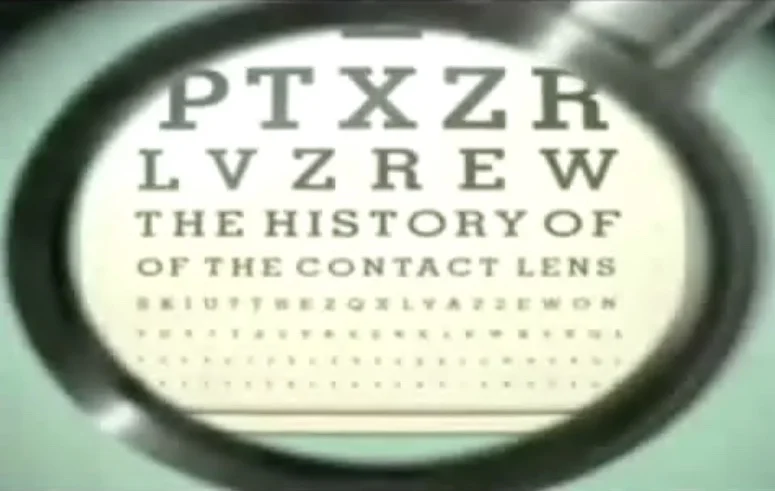Contact Lenses
-pediatric lenses
-infant aphakia correction and management
-myopia control lenses
-presbyopic lenses (monovision, bifocal and multifocal correction)
-toric lenses for astigmatism
-keratoconic lenses
-post-lasik ectasia correction
-post-corneal transplant correction
-topography-assisted custom designed lenses
-custom color and theatrical lenses
Contact lenses have changed dramatically in the last ten years. New technology and research have taken lens materials, optics, and fitting design truly into the next century.
What does this mean to you? Your vision can be crisper. Your contacts can feel lighter than air. Your astigmatism and presbyopia can be corrected without the help of glasses. Your sports performance can be enhanced. Poor color vision can be improved.
In many cases, if you were told you could not wear lenses due to allergies, dry eyes or a complicated prescription, it’s time to try again.
What’s New --
Scleral Lenses
Because they are larger than conventional GP lenses, scleral lenses are more stable and more comfortable on the eye. If you have been unable to wear any other lenses due to corneal disease, poor vision with soft lenses, or discomfort with hard lenses, scleral contact lenses may be the solution you are looking for.
These large-diameter gas permeable (GP) lenses offer sharper vision, greater durability and better comfort than traditional lenses designed for complicated corneas or prescriptions. They are called "scleral" lenses because they vault over the entire corneal surface and rest on the sclera or the "white" of the eye.
Wavefront Technology
Myopia (nearsightedness), hyperopia (farsightedness) and astigmatism are the most common aberrations affecting the optics of the human eye. These are lower order aberrations, which cause light coming into the eye to be defocused in front of or behind the retina, effectively leaving a blur circle on the retina. These are easily corrected with spectacle or contact lenses, which move the focal point forward or back. Why then do many people still complain of halos, ghosting, glare, and poor night vision when they have been corrected to “20/20” with their glasses? These complaints are generally caused by higher order spherical aberrations, which we have not been able to address until very recently. New lenses with high definition aspheric optical design can correct some of these aberrations and result not just in 20/20 vision, but better contrast and a finer detailed image.
Silicon Hydrogel
What are your lenses made of? Traditional soft lenses are made of hydrogel, a water retaining plastic, which allows some oxygen to pass through the material to reach the cornea. The cornea, or first clear membrane of the eye, is an avascular zone. The lack of blood vessels allows for transparency but means that oxygen supply must come from the air. Wearing a lens all day (or worse, overnight, when the lid is closed) reduces the amount of oxygen available to the cornea. In many people, this causes the cornea to swell and results in complications over years of lens wear.
The new silicon hydrogels “breathe” up to six times better than traditional lenses. In most cases, switching to this material quickly reduces corneal swelling, makes the eye look whiter and feel less dry. The result is safer lens wear and a healthier eye.
Presbyopic Correction
Presbyopia is a natural and unavoidable change of the eye in which the crystalline lens becomes less flexible and cannot shift focus for near objects. Progressive spectacle lenses have been available for some time but incorporating the same technology into a 14mm soft plastic disc has been quite a challenge. Today, several contact lens designs are available with presbyopic correction, allowing for clear vision at distance intermediate and near without the limitations of eyeglasses.
Sports Vision
In sports, every advantage gives a competitive edge. The obstruction of a spectacle frame, fogged lenses, glare and reduced peripheral vision detract from optimal performance. Disposeable sports lenses are now available with specialized tints and sharper optics to eliminate glare, filter harmful UV, and block specific wavelengths of light to enhance contrast.
Custom Lathed Contact Lenses
No two fingerprints are alike and the same is true of one’s eyes. In some cases, an eye is so unique that commercially available contact lenses and eyeglasses cannot correct the amount of distortion and defocus caused by the variations of curvature present. We have the technology to “map” the cornea and computer generate a lens to fit all its “hills and valleys.” This creates unparalleled comfort and optics for patients with conditions previously uncorrectable with eyeglasses or contacts.
.



